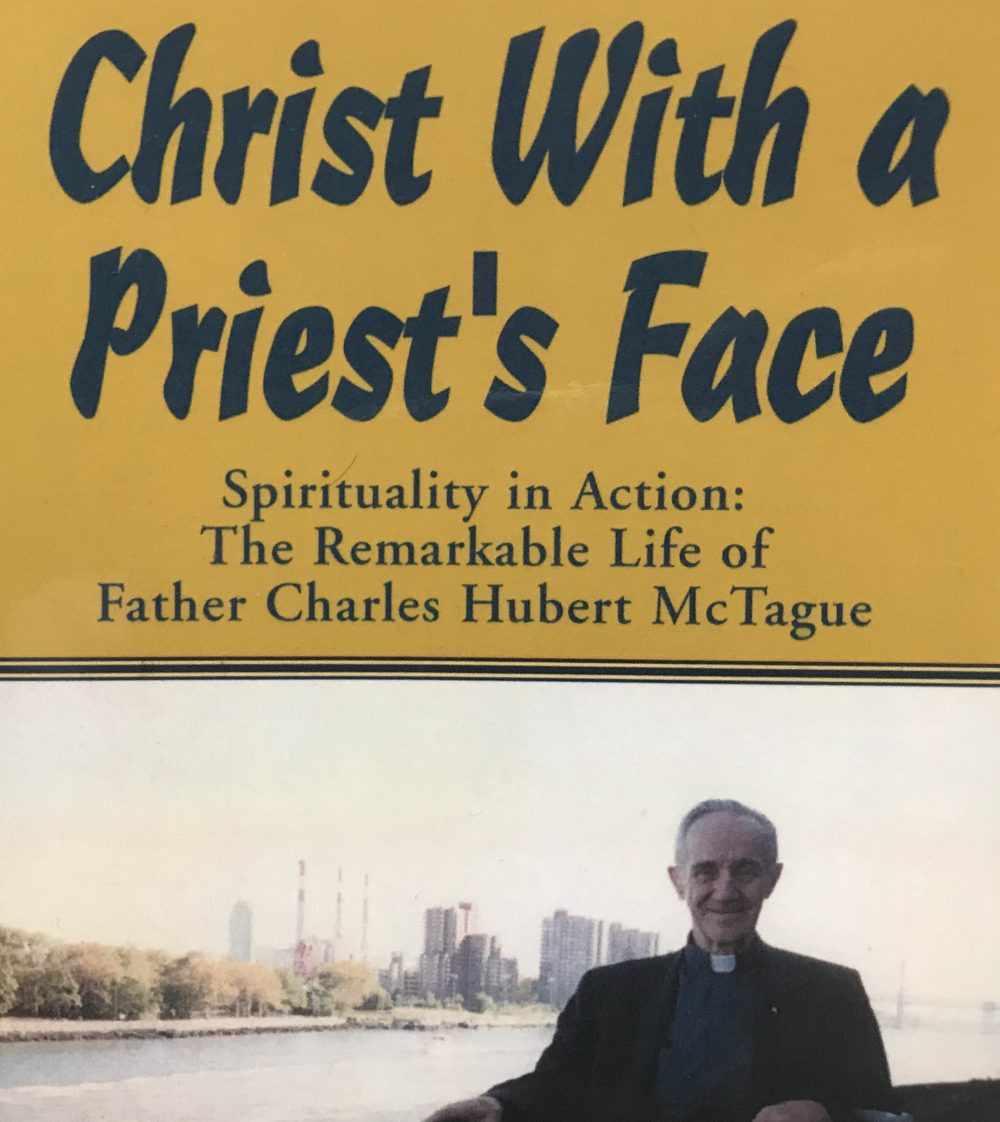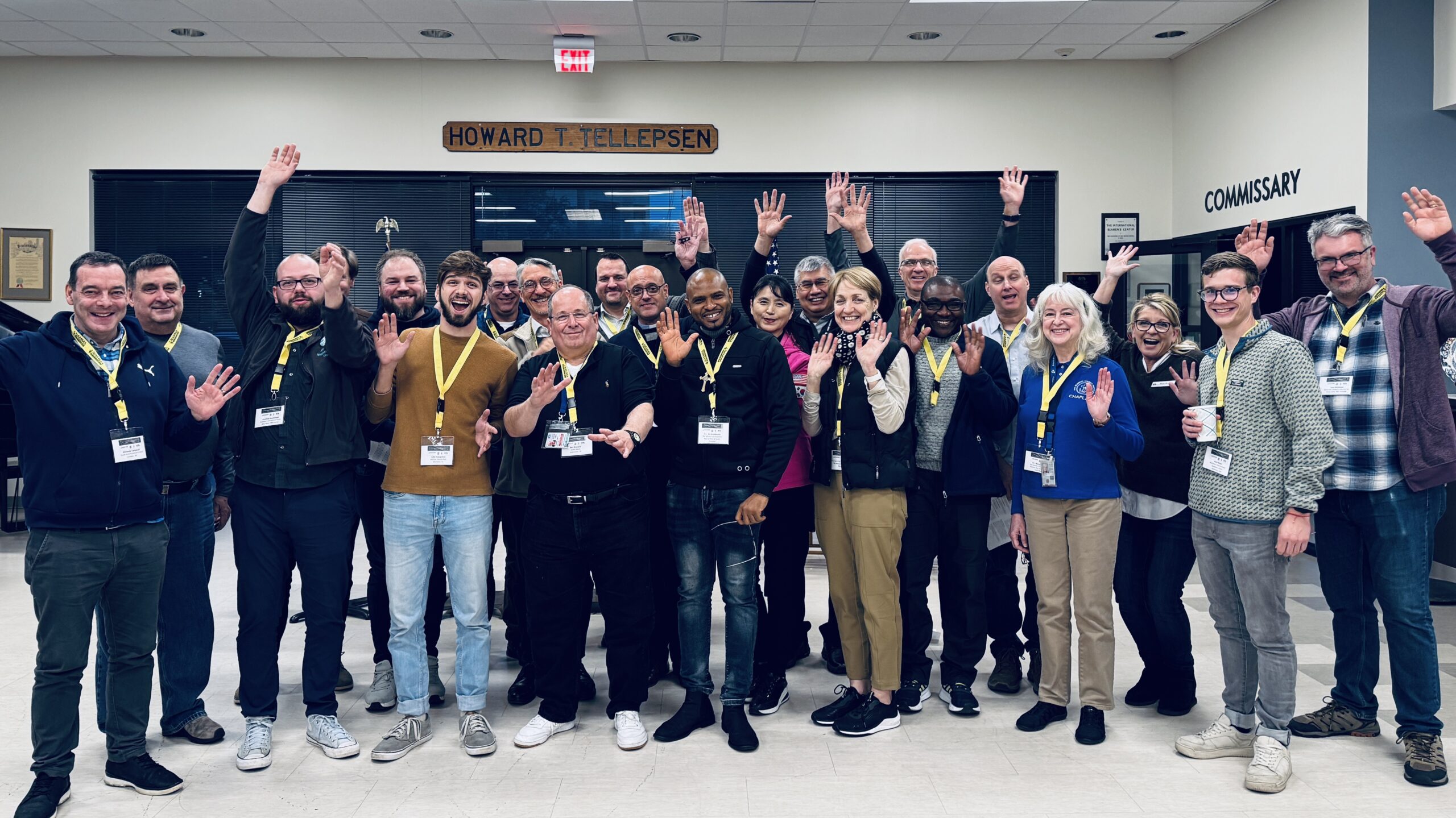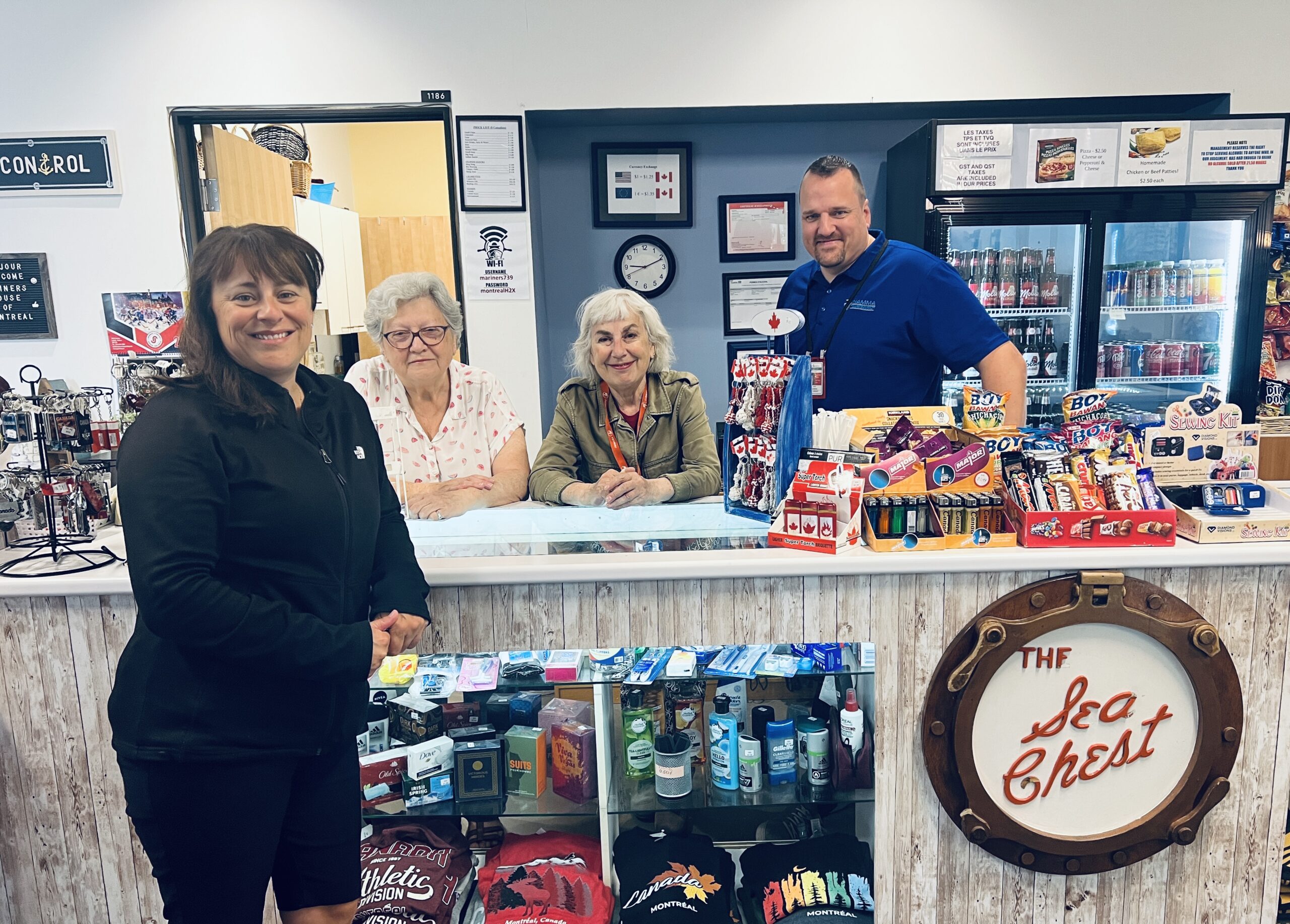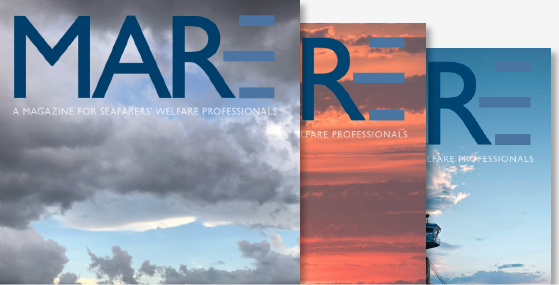Richard L. Byrnes, Christ with a Priest’s Face: Spirituality in Action: The Remarkable Life of Father Charles Hubert McTague. 2002. 139pp.
As the continuous stream of container trucks rumble past, the Stella Maris Chapel on Corbin St. in Port Newark, NJ sits as a quiet oasis. The present building has been there for about 15 years, and is served today by Fr. John Corbett. It was built during the service of his predecessor, Fr. Mario Balbi with generous support of the LoBue family of FAPS, Inc. Though the building is handsome and functional, that is not what attracts those who use it. Most who think of Stella Maris, think of the people who have served.
Among those who left the biggest mark on the work of Stella Maris in Port Newark was Fr. Charles Hubert McTague, or Fr. Charlie, as he liked to be called. Born in 1920, Fr. Charlie was a long-time chaplain in Port Newark, still alive when the new chapel was constructed, but not long for this world. He passed away in 2007.
Many sensed that it would be a shame for Fr. Charlie to pass on without putting to paper the adventures and experiences of his life. A short attempt was George Pereny’s 1993 unpublished manuscript, Father Charlie. However, a much more in-depth and nuanced portrait is given here in Christ with a Priest’s Face by Richard L. Byrnes, who, at the time of writing, was adjunct professor at Seton Hall University, South Orange, New Jersey. The biography is no doubt friendly to the legacy of Fr. Charlie, but it is no simple hagiography, nor a text to support the cause of canonization (though, of interest, Byrnes does stress that all who knew him called him a ‘saint’ and also, without intention perhaps, lists two apparent miracles that could be attributed to Fr. Charlie). The biography is dated in certain respects, but the writing is lively and the story still can be read with benefit.
Charles McTague was born in Buffalo, New York in a devout Catholic family. He moved with his family to New Jersey as a child. His father was a manager in a local railroad, but had connections also to shipping and the sea. Charles’ first experience at college did not go that well, so he left school and went to sea aboard The Monarch of Bermuda in 1937. The ship sailed the Pacific, stopping in Honolulu. It was here that Charles met an Apostleship of the Sea priest, a meeting that kindled his interest in the priesthood, but also in maritime ministry. After a year at sea, he returned to school with a vocation for the priesthood. He completed his studies at Darlington Seminary and was ordained to the priesthood in 1947.
Charles – Fr. Charlie as he now was called – loved the sacramental life of the church, but was especially attracted to the support of those in difficulty. He began a program of assistance for refugees and was involved in support groups for addicts for much of his life. Byrnes claims it apocryphal, but in several interviews people said that they heard Fr. Charlie gave the shirt right off his back to someone in need. Nevertheless, for much of his career, Fr. Charlie’s motto encouraged kindness, “Just do it! The Lord cannot be outdone in his generosity!”
The most famous of stories was his involvement in the Peace Ship project of 1973. The Peace Ship was the brainchild of Israeli peace activist, Abie Nathan, who set up the ship as an offshore radio station to communicate peaceful co-existence to the volatile Middle East. As both representative of a Catholic voice, but, especially, for his nautical experience, Fr. Charlie was a good crewmember to bring the ship from Port Newark to its final anchor point in the Mediterranean. The ship was old, and on its first days of voyage it suffered a crack in its hull during a time of stormy seas. As it would happen, just before launch in Newark, a friend had given the crew a bag of cement for just such an eventuality. They spread the cement over the crack and started to pray. Fr. Charlie was heard praying: “Hail Mary Full of Grace, hold this cement in place.” The cement did the trick and the boat made it safely to its destination.
After the year on the Peace Ship, Fr. Charlie went back to Newark to take up parish work. Yet, it wasn’t easy for a man with his character and experiences to fit in a typical parish. Building on his connection with the sea, he was assigned in 1977 as one of the chaplains at the Stella Maris Chapel in Port Newark, a connection he retained for the rest of his life. The first Stella Maris Chapel had been built on the Elizabeth channel, berth 50, and the second on 129 Marsh St. The new chapel, built near the end of Fr. Charlie’s life (after the publication of this book), still stands near the corner of Corbin and Marsh streets.
Like his previous assignments, Fr. Charlie was concerned to serve seafarers, and the many other members of the port community. Daily mass, counseling support groups, and diaconal ministry were all woven together for the support of those around him. Byrne notes that many of his interviewees expressed how much they appreciated the little acts of mercy Fr. Charlie showed to all those who frequented the chapel.
Byrne’s portrayal of Fr. Charlie is filtered through those whom he interviewed. At a number of points Byrne adds nuance when he feels comments are a bit over the top. For example, Byrne notes that for a priest who seemingly characterized the spirituality of Vatican II in a profound way, Fr. Charlie was not that excited about it, perhaps because he was already living the engagement with the world encouraged by Vatican II long before the Council even started.
This is one of a number of short biographies that help to understand the motivation and methods for maritime ministry in the period after World War II. It is an encouragement to read, but also might be instructive to some on the kind of spirituality port ministers might cultivate.
Review by Jason Zuidema
For more information on the Stella Maris Chapel in Port Newark, click here.





